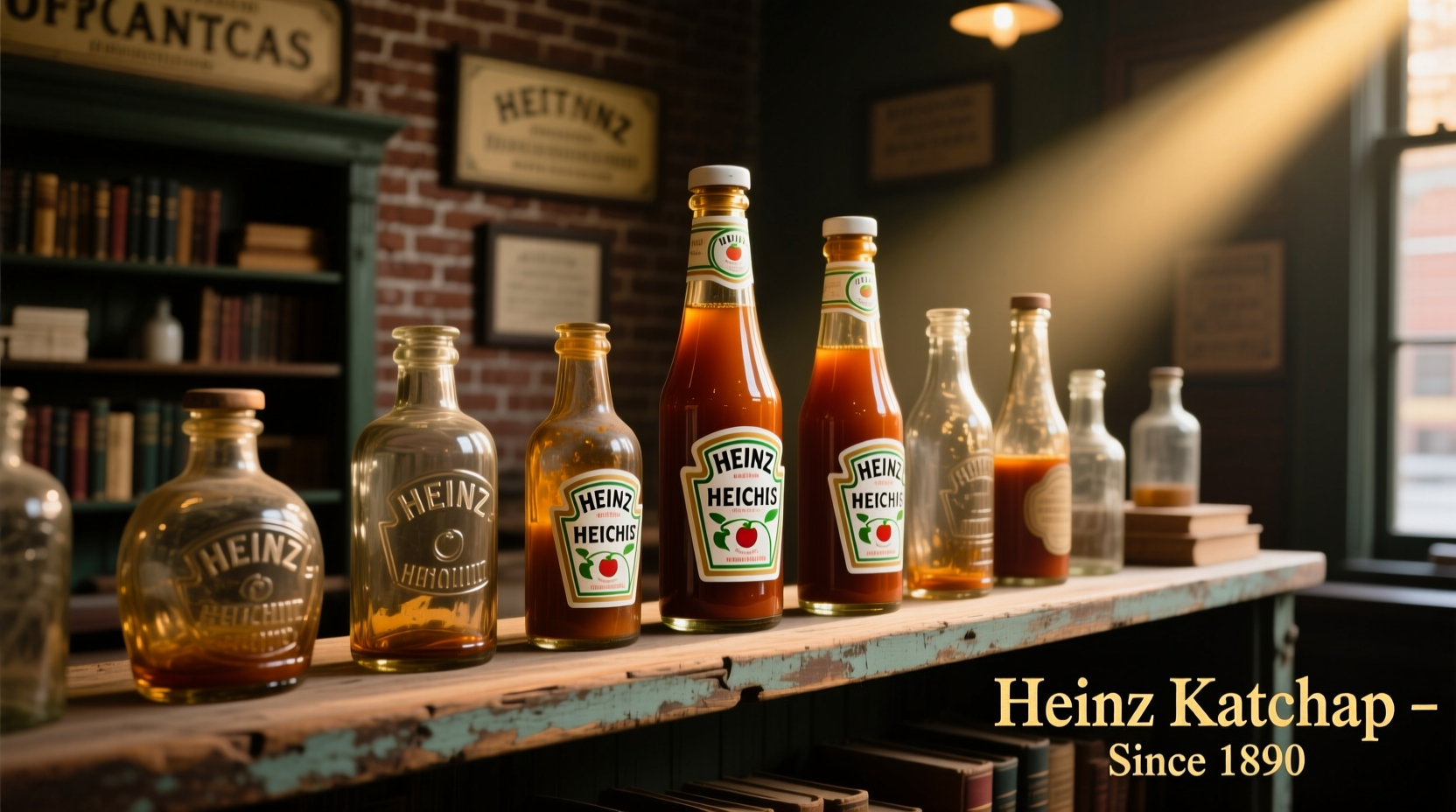Henry John Heinz, founder of the H.J. Heinz Company, earned the informal title "Tomato Ketchup Emperor" by revolutionizing ketchup production in the late 19th century. His commitment to quality, consistency, and food safety transformed ketchup from a variable homemade condiment into America's most popular table sauce.
When you squeeze that familiar bottle of tomato ketchup today, you're experiencing the legacy of a man who changed American food culture forever. Henry John Heinz didn't invent ketchup, but he perfected it—creating the standardized, shelf-stable tomato version that now dominates 95% of the global ketchup market. This article reveals how one entrepreneur's obsession with quality turned a regional condiment into a worldwide phenomenon.
The Unexpected Journey: From Fish Sauce to Tomato Staple
Ketchup's origins might surprise you. The word "ketchup" derives from the Chinese ke-tsiap, a fermented fish sauce popular in Southeast Asia. British sailors brought variations of this sauce to Europe in the 1700s, where cooks began experimenting with local ingredients. Early Western versions used mushrooms, walnuts, or oysters—not tomatoes.
Tomatoes didn't become ketchup's primary ingredient until the mid-1800s. Many Americans considered tomatoes poisonous until the 1820s, delaying their adoption in condiments. When tomato-based recipes finally emerged, they varied wildly in quality and safety. Most homemade versions spoiled quickly, contained unsafe preservatives, or lacked consistent flavor.
| Era | Primary Ingredients | Shelf Life | Market Penetration |
|---|---|---|---|
| 1700-1800 | Fish, mushrooms, walnuts | Weeks | Regional |
| 1800-1870 | Tomatoes (unstable recipes) | Days | Local markets |
| 1876-1900 | Heinz's standardized tomato formula | Months | National distribution |
| 1900-Present | Refined tomato concentrate | Years | Global dominance |
How Heinz Became the Ketchup Emperor
In 1876, Henry Heinz introduced his "43 Varieties" tomato ketchup, though the number referred to his product range, not the ketchup recipe. His breakthrough came from three innovations that addressed critical consumer concerns of the era:
- Vinegar standardization: He used precise 4% acidity levels, eliminating the need for dangerous preservatives like formaldehyde that competitors used
- Tomato selection: He sourced only ripe, blemish-free tomatoes, unlike competitors who used spoiled fruit
- Glass packaging: His clear bottles showcased the product's purity, building trust in an era of food adulteration
According to the Smithsonian National Museum of American History, Heinz's commitment to quality control was revolutionary. While competitors' ketchup contained as little as 35% tomato content, Heinz used 60% tomato concentrate, creating a richer flavor and thicker consistency that consumers preferred. By 1890, Heinz ketchup had captured 75% of the American market.

The Science Behind the Standardization
Heinz's "ketchup emperor" status stemmed from applying scientific principles to food production. His team developed the first standardized measurement for ketchup viscosity—the "Heinz 57" test determined optimal flow rate by measuring how long ketchup took to exit a #3 Zahn cup.
The USDA's 1906 Pure Food and Drug Act validated Heinz's approach. While many competitors struggled to meet new safety standards, Heinz's factory already operated with such rigorous quality control that compliance required minimal changes. This regulatory advantage cemented his market dominance during a critical industry transition.
Modern Ketchup Evolution and Culinary Applications
Today's ketchup maintains Heinz's core formula but has evolved through subtle refinements. Modern production uses:
- Tomato concentrate with minimum 28% solids content
- Vinegar standardized to 2.3-2.8% acidity
- High-fructose corn syrup replacing some sugar for consistent sweetness
- Natural flavor enhancers like onion and garlic powder
Chef Thomas Keller's Ad Hoc at Home cookbook demonstrates how professional kitchens use ketchup beyond burgers. His technique for "ketchup-cured" salmon involves marinating fish in a mixture of ketchup, brown sugar, and lemon zest—a method that leverages ketchup's balanced acidity and umami for tenderizing.
Practical Ketchup Selection Guide
Not all ketchups deliver equal quality. When selecting ketchup for home cooking:
- Check ingredient order: Tomatoes should be first ingredient, not tomato paste or concentrate
- Avoid artificial preservatives: Potassium sorbate indicates lower quality formulations
- Test viscosity: Quality ketchup should hold its shape for 3-5 seconds when spooned
- Consider sugar content: Traditional recipes use 4g sugar per tablespoon; many modern versions exceed 7g
For authentic historical cooking, try making 19th-century style ketchup using the Library of Congress's digitized 1888 recipe: simmer 2 lbs ripe tomatoes with 1 cup vinegar, 1/2 cup sugar, and 1 tsp each of allspice, cloves, and cinnamon for 3 hours before straining.
Preserving the Legacy
The "Tomato Ketchup Emperor" legacy continues through modern food science. Current research at Cornell University's Food Science Department focuses on optimizing lycopene retention during ketchup production—the antioxidant responsible for tomatoes' health benefits. Their findings show that traditional slow-cooking methods preserve 30% more lycopene than rapid industrial processing.
As food historian Andrew F. Smith notes in Pure Ketchup: A History of America's National Condiment, "Heinz didn't just sell ketchup—he sold trust in a bottle." That fundamental principle remains relevant as consumers increasingly demand transparency in food production.











 浙公网安备
33010002000092号
浙公网安备
33010002000092号 浙B2-20120091-4
浙B2-20120091-4